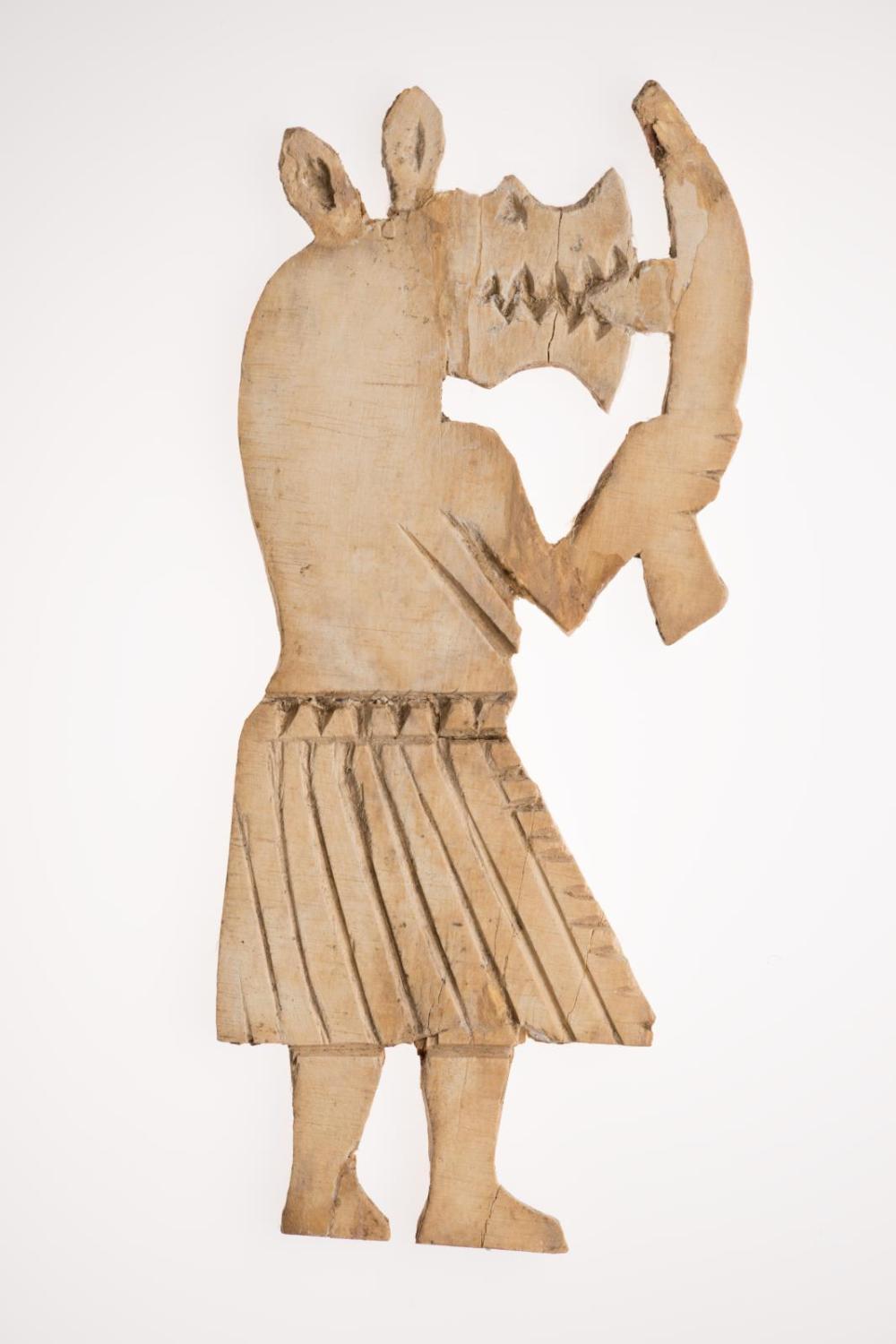Advanced Search 

Ivory inlay of Taweret
Nubian
Classic Kerma
about 1700–1550 B.C.
Findspot: Nubia (Sudan), Kerma, tomb K 439
Medium/Technique
Ivory
Dimensions
Height x width x depth: 9.8 x 4.3 x 0.3 cm (3 7/8 x 1 11/16 x 1/8 in.)
Credit Line
Harvard University—Boston Museum of Fine Arts Expedition
Accession Number20.1514
NOT ON VIEW
CollectionsAncient Egypt, Nubia and the Near East
ClassificationsFurniture
DescriptionThis ivory inlay piece, which would have adorned a wooden fixture such as a funerary bed, depicts the goddess Taweret, facing right and holding a knife in front of her, wearing a somewhat flaring skirt. Lightly incised lines indicate the mouth, arm, and one pendulous breast. It has broken into several fragments but the surviving portions comprise a nearly complete inlay.
Taweret (literally: "the great one") was an especially popular goddess in the domestic sphere throughout pharaonic times. She was conceived as having the body and head of a pregnant hippo, paws of a lion, and back/tail of a crocodile. She was considered a protective deity especially for expecting and birthing mothers as well as young children. She often weilds a knife as a symbol of this protective role. Her images appear on many household fixtures such as beds, chairs, and headrests, all of which can also be found as funerary items. She became known outside of Egypt as well, appearing in Nubia (as with this object) and Crete.
Taweret (literally: "the great one") was an especially popular goddess in the domestic sphere throughout pharaonic times. She was conceived as having the body and head of a pregnant hippo, paws of a lion, and back/tail of a crocodile. She was considered a protective deity especially for expecting and birthing mothers as well as young children. She often weilds a knife as a symbol of this protective role. Her images appear on many household fixtures such as beds, chairs, and headrests, all of which can also be found as funerary items. She became known outside of Egypt as well, appearing in Nubia (as with this object) and Crete.
ProvenanceFrom Kerma, tomb K 439. 1914: excavated by the Harvard University–Boston Museum of Fine Arts Expedition; assigned to the MFA in the division of finds by the government of Sudan.
(Accession Date: March 1, 1920)
(Accession Date: March 1, 1920)
